This article is part of a cross-border investigative series supported by Journalismfund Europe.
Chris Carlton built his house in Ingleside, Texas in 2008, back when it was a sleepy fishing town. “We were this little pocket of paradise. This area was known for fishing long before it was known for petroleum.”
Since then, more than a dozen oil and chemical facilities have sprung up along the coastline, drawn to the local area by access to Transatlantic shipping routes, the cheap supply of fossil fuels and lenient local regulators.
Now, a new industry is rolling in – one with its sights firmly set on winning over the local community.
In 2023, Norwegian fertiliser giant Yara teamed up with Canadian pipeline operator Enbridge, announcing plans to build the first ammonia plant in Ingleside. Yara claimed that the chemical – a key ingredient in fertilisers – would “significantly contribute to our strategy of decarbonizing agriculture” and provide a “clean” fuel for shipping and power production.
The new plant would produce up to 8,000 metric tonnes of ‘low-carbon’ ammonia every day by 2030, making it one of Yara’s largest-ever facilities. The companies say that the chemical “will be exported by marine vessel” by Yara, which already ships ammonia to countries in Europe, Asia and elsewhere.
The project’s success is contingent on gaining support from the local city council, which has so far backed concerned residents opposing the plant.
Over the past two years, the companies have launched numerous social initiatives touching on nearly every aspect of town life, from opening a food bank to gifting free baseball tickets and children’s shoes – in what some residents describe as a “charm offensive”. The project has dubbed itself “Project YaREN” in reference to the Norwegian word ‘ren’ meaning ‘clean’.
But many locals, alongside experts and campaigners, say that the plant could have devastating impacts on the environment and human and marine health.
Proponents of ammonia, a compound of nitrogen and hydrogen, highlight the fact that it is clean-burning, releasing no carbon dioxide. However, more than 99 percent of ammonia is currently made using fossil fuels, accounting for 450 megatonnes of carbon dioxide a year.
Analysis by DeSmog indicates that Ingleside’s new plant could require more gas than is consumed by Switzerland, Bulgaria or Denmark each year.
Yara and Enbridge say they will decarbonise ammonia production through Carbon Capture and Storage (CCS) – where emissions from industrial processes are captured and stored underground, producing so-called ‘blue ammonia’.
But many residents and experts are sceptical of these claims. CCS has been widely criticised for failing to meet its promised potential. It does nothing to tackle emissions from gas extraction or ammonia use, which currently accounts for the largest share of emissions from the gas, once it’s spread on fields as fertiliser.
Ammonia can be highly toxic to humans and animal life when leaked. The new plant would be a major emitter of air pollutants that can cause respiratory problems, heart attacks and premature death in those with heart or lung disease, analysis by DeSmog shows.
With demand for the chemical booming, the Ingleside plant is just one of 32 new facilities on the horizon in the U.S., with the country’s ammonia production set to quadruple if all planned sites go ahead. The majority are based in Texas or the neighbouring state of Louisiana.
A spokesperson for Yara, Enbridge and YarEN told DeSmog, “We are committed to safety, working with the community, protecting people and the environment, and providing energy to the people who need it.”
However Melanie Shafer, who has lived in Ingleside since childhood, says her community is being “bought out by cheap tricks”, referring to the companies’ efforts to win local support.
“All around, my community’s going to suffer from the air pollution,” Shafer says. “I’ve lived here my whole life, it’s my home, and watching it turn to a wasteland is so sad.”
“They’ve come here because Texas has lax environmental laws,” Ingleside resident Janet Laylor told council members during a public meeting in January 2024, where YaREN’s local permit was discussed. “They knew they could come in here because this is the place to go to pollute.”
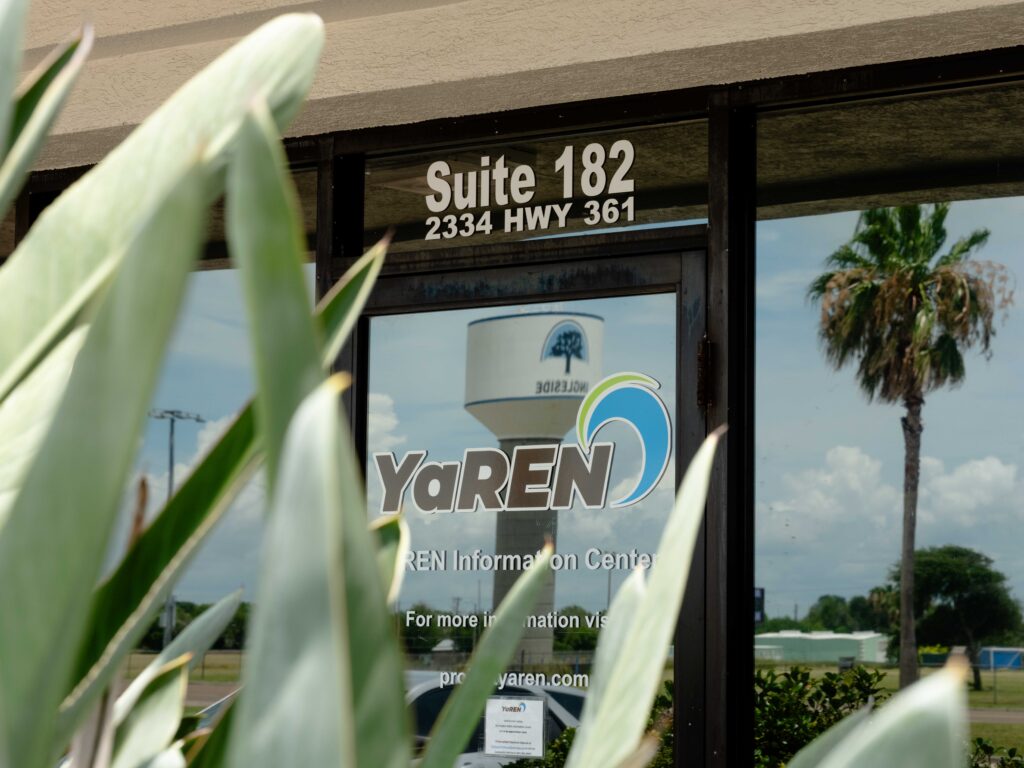
‘David and Goliath’
The $5 billion facility would be built on Enbridge’s existing ‘energy center’ next to the town, where the company already runs the largest oil export facility in the country. To begin construction, YaREN requires permission from the local city council as well as three environmental permits from the state regulator the Texas Commission on Environmental Quality (TCEQ), which will assess the levels of expected air and water pollution, and the amount of water that the plant would use.
Hundreds of residents responded to the public consultation on the air pollution permit, and dozens have spoken out at council sessions and public meetings with the companies.
Campaigners have characterised the fight between concerned locals and the companies as one of “David and Goliath”. Norway’s Yara is the biggest ammonia trader in the world and Europe’s largest fertilizer producer, while Ingleside is a former military town with a population of less than 10,000.
YaREN has “invested” heavily in winning over this population, made up of lifelong locals, retired workers from the oil and gas sector, and recreational fishers, who run a volunteer fire brigade.
Last year, the companies hosted and attended over 200 local events and provided more than $200,000 (£147,000) for projects and community programs. Their initiatives have ranged from running a blood donation drive and buying lunch for the local police force, to visiting local schools and colleges to “build relationships” and give career advice. They say the factory would offer up to 4,000 jobs at the height of construction and up to 200 once opened.
YaREN’s community efforts have featured heavily on social media, including a video on its Facebook page, where teachers from a local school thank the companies for donating shoes as children tie up laces on box-fresh trainers. It also includes multiple posts about an event to celebrate Earth Month in April, where it handed out free “drought-resistant native plants”.
“Swing by, grab some greenery, and be part of a sustainable future,” YaREN posted. “We are strengthening the roots of our connection to the community”.
A number of locals have backed Project YaREN, with posts on Facebook stating, “Looking forward to the economic growth for our area”, and “A community cannot grow without industry.” But many are concerned about the “charm offensive”, particularly the company’s apparent targeting of local schools and teachers.
Melanie Shafer, who has two children, submitted a formal complaint to the local school district board about the company’s actions, which she said “raise serious ethical … red flags, especially when conducted in front of impressionable minors and within publicly funded educational spaces”. The proposed plant is located two miles from Ingleside Primary School.
“These are not benign gestures, these are strategic efforts by powerful corporations to secure local goodwill in anticipation of controversial projects,” she wrote. In its response to Shafer, seen by DeSmog, the board said it “recognises the importance of economic development and the potential benefits industry projects can bring to our community”. “The district remains neutral on all Project YaREN endeavors,” they added.
Steve Diehl, who was a city councillor from 2019 until last month, agrees with Shafer. “It’s propaganda building,” he says, referring to a local storefront that YaREN has rented since 2024 to meet members of the community, where it holds events with “experts available to answer your questions one-on-one”.
Last year, Diehl filed a motion to deny YaREN permission to produce ammonia at the plant. During a four-and-a-half-hour meeting in January 2024, at which dozens of residents spoke against the plant, the local city council unanimously voted in support of Diehl’s motion, refusing permission to the companies.
The decision was a major win for concerned residents – unusual in a state home to hundreds of chemical plants and where campaigners say they rarely receive this level of political backing.
YaREN ramped up efforts to win over the community following the meeting – creating its Facebook page in April 2024, hiring a local non-profit organiser to lead its engagement in June, and launching a series of paid ads on Facebook and LinkedIn about the “safety” of and “tax revenue” from the project in August.
A spokesperson for YaREN, Yara and Enbridge acknowledged that “residents have questions about the project”, and stated that they had opened the information centre in response to this. Project YaREN is “actively investing in Ingleside and the greater Coastal Bend community through partnerships, education, and workforce initiatives,” they added.
For now, the decision about the project hangs in the balance. YaREN is pushing forward, having submitted its requests for the three TCEQ permits since the meeting, but will have to return to the city council for the go-ahead before construction begins. Diehl thinks the companies could have been waiting until he left office, after stepping down before local elections in May. “I hope that’s not the case,” he says.
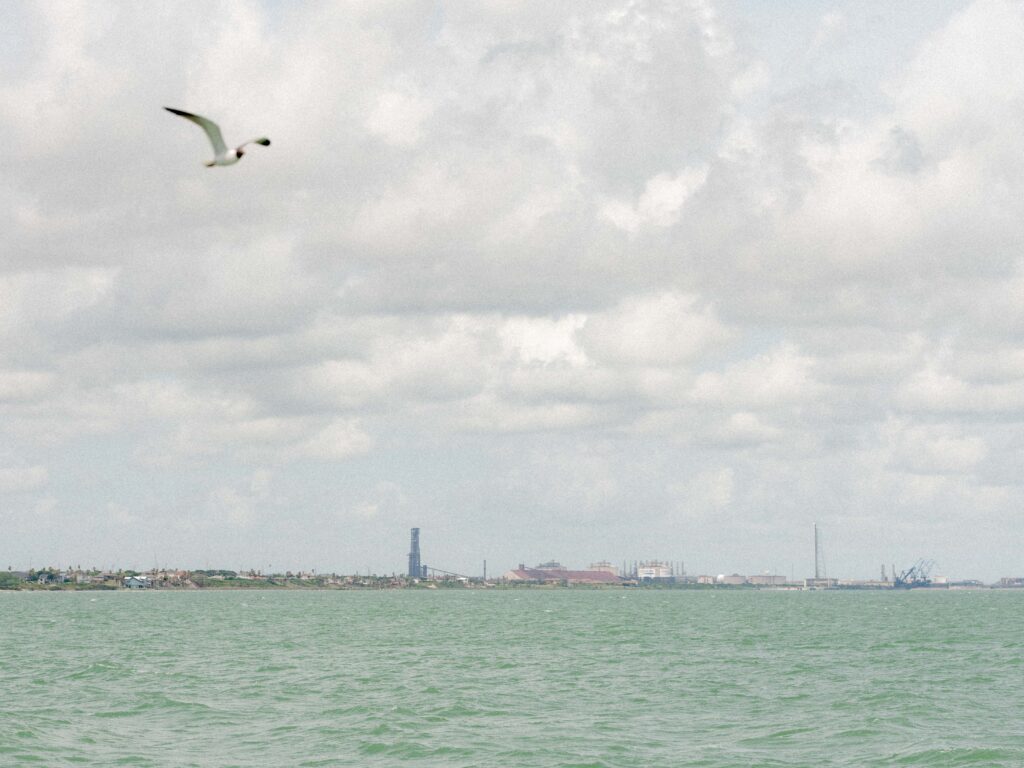
Toxic Air
The community’s concerns largely centre on health risks associated with the plant.
YaREN’s application to TCEQ to emit air pollution shows that the factory would be a significant source of pollutants such as nitrogen oxides (NOx), which can cause asthma and other respiratory problems, and very fine particulate matter known as PM2.5, which can cause everything from diabetes to premature birth.
In August 2024, the state’s regulator, TCEQ, provisionally granted the air pollution permit to the companies, pending public consultation, and stated that the new facility “will not violate any state or federal air quality regulations”.
Yet local campaign groups say this conclusion was based on inadequate data. The regulator operates a number of stations for monitoring air pollution throughout Texas, but none are located in Ingleside. The closest is across the bay in the neighbouring city of Corpus Christi, around 15 miles away.
For any new factory, TCEQ has to determine whether the additional emissions would push the region beyond legal limits. But due to the lack of local data, both TCEQ and YaREN relied on figures from the Corpus Christi stations to show that the new facility would not breach these laws.
For levels of nitrogen dioxide pollution, a form of NOx, YaREN used figures from a different station in Beaumont, Jefferson County, which is a four-and-a-half-hour drive and almost 300 miles from Ingleside.
Campaign group Coastal Watch Association (CWA) says that the figures from these monitoring sites significantly underestimate the amount of pollution already in the town. The group, which is leading the campaign against YaREN, runs its own air pollution monitors in Ingleside and the wider San Patricio County. Its data, seen by DeSmog, indicates that averages for fine particulate matter known as PM2.5 pollution already surpass federal limits and far exceed the limit recommended by the intergovernmental World Health Organisation.
YaREN did not respond to residents’ concerns that permit documents did not include adequate data, but did state that it would have “safeguards” in place, including air monitoring stations, and that safety provisions in its construction plans “exceed current industry standards”.
Ingleside resident Melanie Shafer told DeSmog that her family is already feeling the effects of the pollution. Her nine-year-old son has severe asthma, and her mum suffers from a rare autoimmune disease, symptoms of which are aggravated by poor air quality.
“Some days we can’t go outside because my son’s like, ‘mum, the air’s so thick, I can’t breathe,’” Shafer says.
The family thinks they will leave the town in the next few years. “This was home, this is where we set up roots. I wanted to raise my kids here, it’s a great place to grow up,” Shafer says. “But we’re going to have to move and settle again. My kids are gonna have to make new friends. We’ve been sold out for money.”
This scenario is not unusual in the state, according to Beth Gardiner, journalist and author of the book ‘Choked: Life and Beath in the Age of Air Pollution’. Texas is “notorious for being very pro- industry, and a very lax environmental enforcer,” she says.
“If you speak to people down there, they will say that TCEQ will give a permit to anybody. They’re not doing an adequate job to protect health and the environment.”
A spokesperson for TCEQ declined to comment on concerns raised by experts and residents about its track record in terms of permitting and environmental enforcement. “TCEQ will not comment on pending permits or statements from outside groups at this time. Comments provided during the comment period for a pending permit will be reviewed and responded to ahead of the issuance of an air permit.”
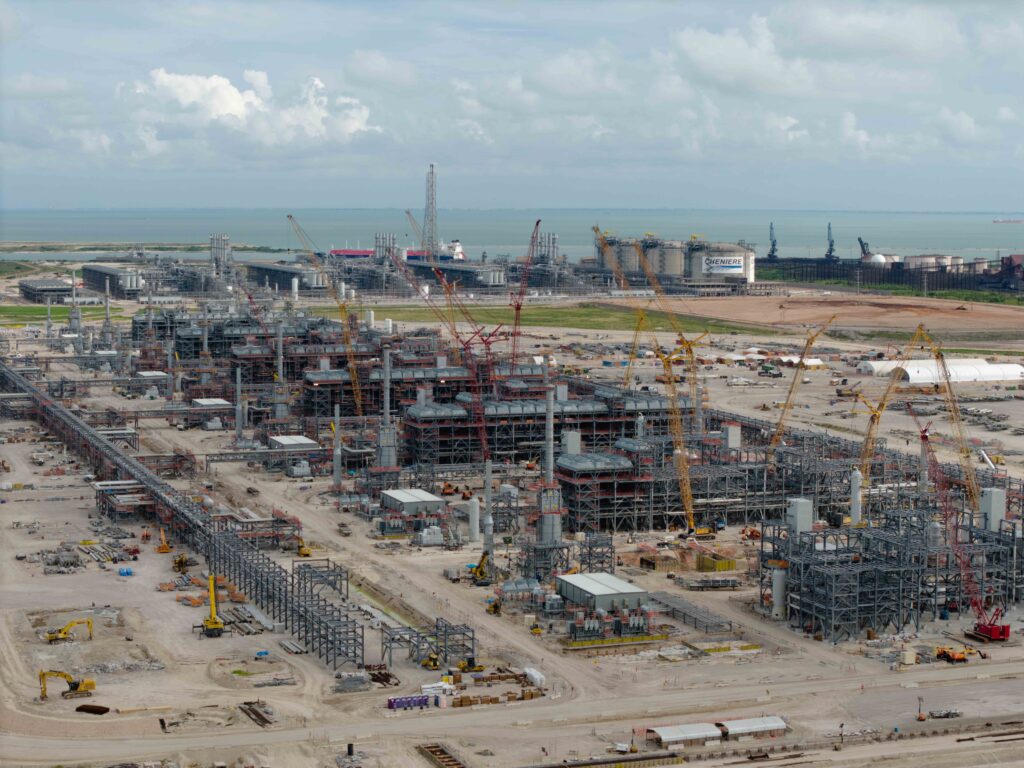
Targeting Texas
Industrial expansion in Texas and neighbouring Louisiana has historically targeted low-income, and Black, Brown and Indigenous communities. While Ingleside is only slightly poorer than the U.S. average , around half of its residents are Hispanic or Latino. Across the U.S., Black and Hispanic people are the most likely to die from PM2.5 pollution.
Alongside the impacts of this pollution, residents also fear an industrial disaster. When inhaled, ammonia can burn or corrode tissues in the body, including the lungs and respiratory tract. Major ammonia leaks are rare, but Coastal Watch Association says the consequences would be too dire to take the risk.
“We’re right along the fence line of the proposed site and any sort of disastrous release would put our whole community at risk,” says Payton Campbell, who runs the air monitoring programme at Coastal Watch Association. Ingleside does not have a hospital, with the nearest in Corpus Christi over 20 miles away, and only has a volunteer fire department. Campbell fears that the town would be ill-equipped to respond to a major emergency.
In a statement to DeSmog, YaREN said they would have ammonia detectors positioned around the plant “to immediately detect any issues, should any come up.” Its response would be “swift and immediate,” they added.
In March, the federal Environmental Protection Agency announced that it would “revisit” stricter PM2.5 limits introduced under President Joe Biden, saying they had “served as a major obstacle to permitting”. The same month, the Trump administration invited 500 existing industrial facilities to apply for an exemption from the federal limits on the amount of air pollution they can emit – including nearly 100 in Texas, the largest number of any state.
Campbell believes that whatever decision is made about YaREN now will set a precedent for the future of ammonia in the area. “It all depends on this facility – whether they can prove it can be built. We have to focus on stopping this first one, or there will be more to come,” he says.
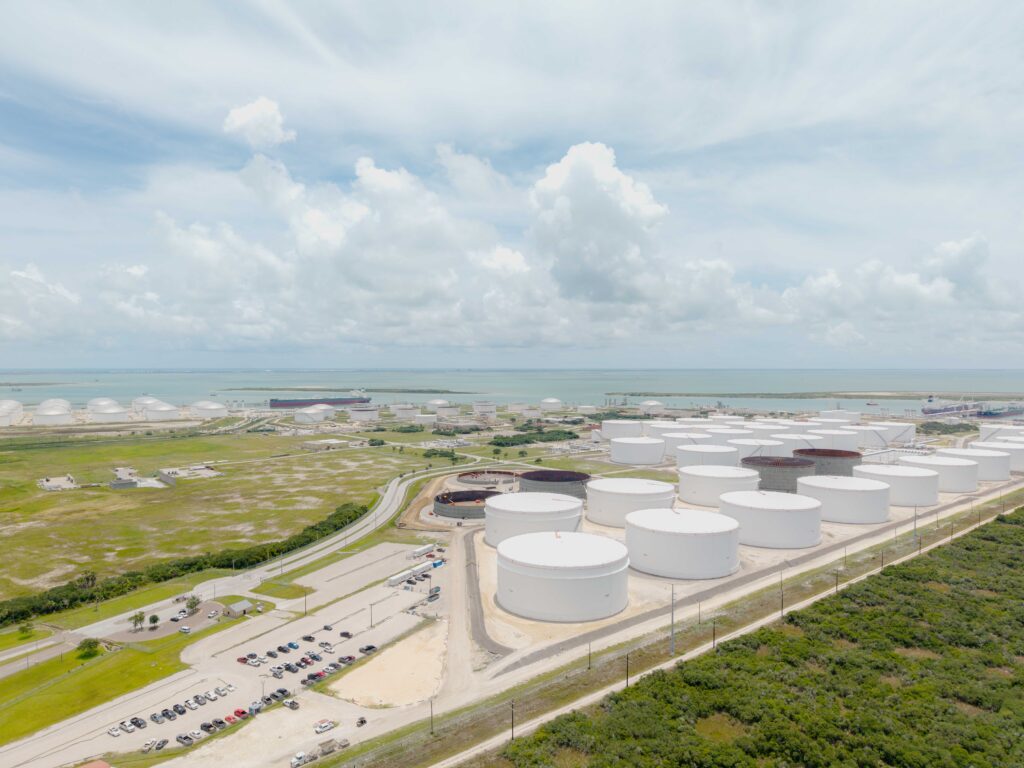
‘Greenwashing our Community’
The ammonia industry argues that plants like Project YaREN will be essential to decarbonise energy-intensive sectors – offering what they call a “low-carbon” fuel to run ships, provide energy and produce more ‘climate conscious’ fertilizers. Globally, demand for ammonia is expected to triple by 2050, driven by these new ‘sustainable’ markets and expanding fertilizer use.
The majority of ammonia is produced by converting natural gas into hydrogen, which is then reacted with nitrogen that has been separated from the air. While YaREN will rely on gas, the companies say they will “capture 95 percent of all CO2 emissions” from the process using CCS to produce so-called ‘blue ammonia’.
The CCS project – which would be operated by Enbridge alongside a subsidiary of the oil company Occidental Petroleum and eventually serve multiple local plants – would see the captured carbon dioxide transported south west through 64 miles of pipeline. The destination would be a storage facility on the 825,000-acre King Ranch cattle and cotton farm, where it would be pumped underground for storage.
Yet, existing CCS projects have repeatedly failed to meet their promised capture rates, generally achieving far below 95 percent. The technology would also only capture emissions at the plant, doing nothing to curb the majority of emissions, which arise from the extraction of the natural gas and from ammonia use.
Experts warn that increasing ‘blue ammonia’ production could become an “escape hatch” for fossil fuel use. YaREN could require as much as 3.5 billion cubic meters of natural gas every year for its ammonia production, according to DeSmog’s calculations.
To supply gas to its Ingleside Energy Center site, Enbridge is developing a new 18-mile gas pipeline. The project would link the site to the company’s existing Texas Eastern Transmission pipeline, which runs 9,000 miles from the state to New York, and is fed by fracked shale gas.
Texas is the country’s largest producer of natural gas, accounting for around a quarter of all production, from its shale basins. Shale gas extraction releases large volumes of the potent greenhouse gas methane as well as multiple toxic chemicals and pollutants into the air and water.
YaREN and Enbridge did not respond to questions about whether construction of the gas pipeline was contingent on the ammonia facility’s approval.
Campbell, from Coastal Watch Association, believes that YaREN’s focus on promoting the chemical as ‘low-carbon’ is part of a wider trend among chemical and oil and gas companies in the region.
“There’s a constant greenwashing campaign being waged from industry against our entire community,” he says. “Companies are constantly touting how environmentally friendly they are, but they’re just getting permission to pollute.”
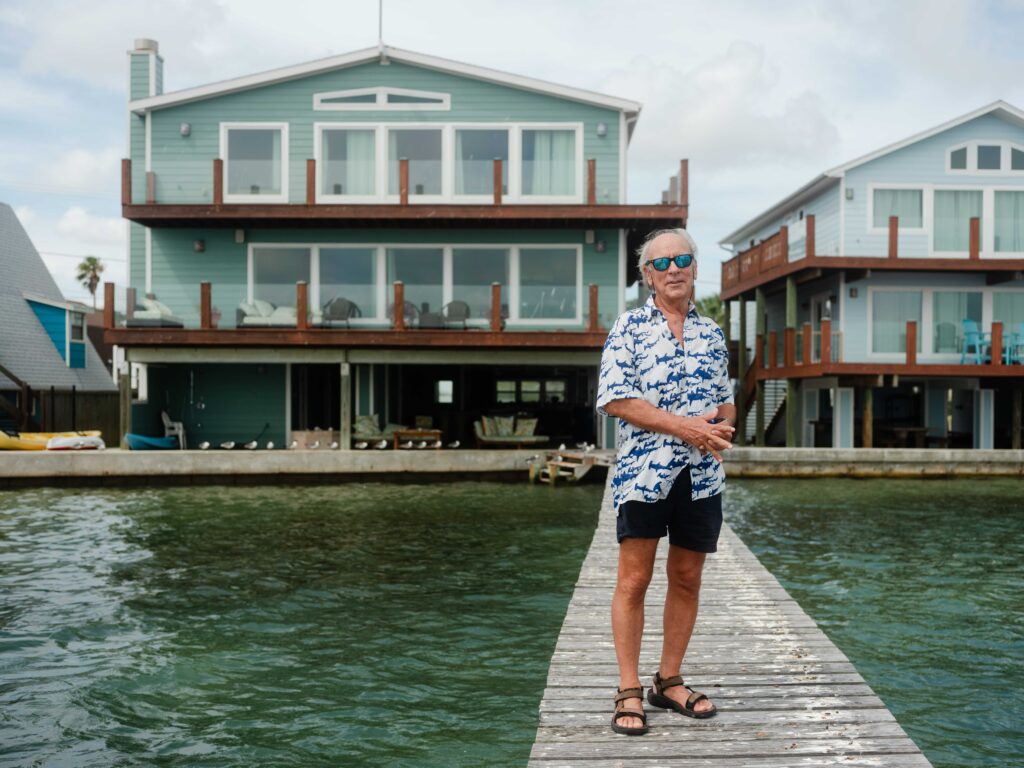
Changing Coastline
Climate harms from projects like YaREN’s proposed plant pose an immediate threat to Ingleside’s community. Texas is one of America’s most climate-vulnerable states – facing among the highest risks for drought, flooding and temperature-related deaths.
Patrick Nye lives in a stilt house in Ingleside-on-the-Bay – the coastal strip south of the main town, which is adjacent to YaREN’s planned ammonia plant. Since Nye’s parents bought the plot in 1967, sea levels have risen by over one and a half feet.
“I remember having a beach in front of our house where we could skim board and hunt for seashells,” says Nye, who worked as a petroleum geologist on the Gulf Coast for 44 years. But that is gone now due to sea level rise and subsidence. “Storm surges are more destructive,” he adds.
Modelling by the federal agency the National Oceanic and Atmospheric Administration projects that many of the coastal roads in Ingleside-on-the-Bay could be submerged by the end of the century due to climate breakdown. YaREN’s air quality permit application for the facility includes government data showing that the town is in the 82nd percentile across the country for flood risk.
Nye helped found the Coastal Watch Association in 2019 to study this risk. Since then, his group has engaged in more than a dozen legal battles against corporations and regulators to fight a wave of polluting industries trying to move into the area.
With the local shoreline already changing, CWA and advocacy group Healthy Gulf warn that animal life will be affected by both climate change and the arrival of the new plant, which would require 40,000 gallons of water a minute to feed its boiler and cool the facility.
The companies say that they plan to “primarily use seawater for its operations” and would return most of the water they use back to the Corpus Christi Bay. But environmental groups fear that wastewater released from YaREN’s factory would change the temperature and salt-level of water in the local bay, with potential ripple effects felt throughout the local aquatic ecosystem.
Local species such as the blue crab and white shrimps are highly sensitive to salinity levels, and the Gulf of Mexico is an important breeding ground for these animals, which use local inlets like Redfish Bay to spawn in seagrass habitats. Neighbouring shores also provide nesting places for rare sea turtles.
YaREN told DeSmog that it would “utilize water responsibly” and was “committed to minimizing its impact on local water resources”.
But environmental groups are not convinced. Without confidence in state regulators to address issues like these, the fight has been left to community members.
“Our state government doesn’t give a flip about the hundreds of thousands of vulnerable people who live along the coast,” Nye says. “It’s all about economic development. We must fight against this to save our quality of life.”
This story is published in partnership with The Texas Tribune a nonprofit, nonpartisan media organization that informs Texans — and engages with them — about public policy, politics, government and statewide issues
Additional research and reporting by Agathe Bounfour and Louis Goddard
Editing by Phoebe Cooke
The post This Small Texas Town Is Fighting Back Against Big Ammonia appeared first on DeSmog.
This post has been syndicated from DeSmog, where it was published under this address.
